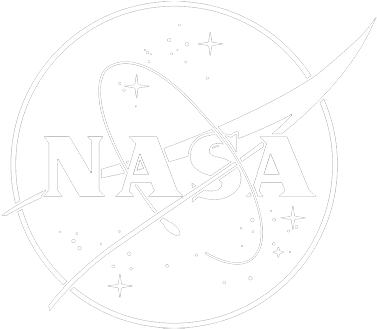ANT Automation a NASA Story


Ant Automation: A Declaration of Principles
Ant Automation LLC has been operating for more than 12 years, developing software and providing solutions for automatization in the manufacturing industry.
The company’s name and its logo are full of symbolism. ANT is an acronym for “Applying New Technologies” that also references the insect, known for its efficient work as a colony instead of individuals. In the company, having community at its forefront, working as a team to face and overcome adversity is what defines its principles. Ants adapt quickly to changes in the environment, and they evolve. They are small, but they can lift things that are multiple times their weight. The company’s logo is an ant’s head that resembles an alien. A company founded by immigrants, like our grandparents in Argentina, entrepreneurs fighting to move forward. We are aiming to be like Linepithema humile, also known as the Argentine ant, which has built a global mega colony and whose success as a species is based, in human terms, on its idiosyncrasy and work ethic.
Born in the 3rd Industrial Revolution, Leaders of the 4th
ANT automation provides high quality engineering services, helps its clients improve and increase their production via the capture and analysis of great quantities of data, transforming them into knowledge used to create simulations of production processes and to create algorithms of artificial intelligence. ANT is part of the fourth industrial revolution. The first one took place when we were able to imagine how steam power could be applied in practical forms; the second one was due to electricity and the creation of assembly lines; the third, in the early 70’s of the 20th century, started due to the use of computers in automation and more recently, due to the massive use of robots. The fourth revolution is different. It is intangible in the sense that there are no powerful physical phenomena capable of generating powerful forces. It is a revolution based on data, a revolution in which physical processes have their twin in a reality parallel to our own, the digital realm, from which it derives its name: 4.0 industry or Digital Transformation.
Innovation to Zero
If we don’t act now, the damage of climate change will be irreversible. It will drag us all with it, regardless if we are strangers in a strange land, or if we live in isolation in a Pampa’s forest. There is no escape from it. We will see our children have a lower quality life than the one we ourselves have. Here, in ANT, we are convinced of three things; first, to avoid this future, greenhouse gas emissions have to be ZERO; second, it is necessary to develop tools already at our disposal, such as solar power and wind power, in a faster and smarter manner. Third, we need to create and implement innovative technologies that could pave the rest of the way to our objective. Since its conception, ANT stood out for continuously investing on the research and development of new technologies, for being an economically sustainable company, and for our efforts to leave behind a minimal carbon footprint in each line of code we write, focusing on technologies of ZERO emission.
NASA & ANT During the Pandemic
In 2020, we had to adapt to our new reality, choosing between reducing our operations like many other companies had done or aggressively increasing investing on I&D. We chose the latter, adding the whole colony to the effort. We searched for an area where our expertise could help in achieving ZERO emission. The facts show that 16% of greenhouse gases emissions come from transportation (surprisingly, we discovered that 19% of emissions are due to the way we grow crops and raise animals for consumption, but that’s another story entirely). Manufacturing contributes to 31% of emissions and the majority of these emissions is due to the production of cement and steel (10% of total emissions).
Then, we discovered that we could focus our work to reduce two of the five primary causes for the emission of greenhouse gases to the atmosphere by changing the way we travel: building less road infrastructure (the construction of bridges and roads are one of the primary consumers of steel and concrete) and powering our vehicles electrically. We got working and presented NASA with a project in which we applied our experience in simulation, virtual reality, and augmented reality to this objective. The result was bigger than the sum of individual efforts. After evaluating our ideas and finalizing an investigation where our experience was verified, NASA decided to finance our research and development project of an Advanced Aerial Mobility simulation.
Revolutionizing the Way We Travel
According to a joint study between NASA and federal agencies, there are currently 200 aeronautic companies and startups with 2 billion dollars in private investments that will be ready to massively produce medium sized, electric vertical takeoff and landing vehicles (eVTOL) for the transportation of cargo and people by 2028. These vehicles will be able to operate autonomously. We will be able to call them with a phone app to pick us up from the origin point and drop us off at the desired location. In the future, we will own and operate these vehicles through a process that will be no more complicated than obtaining a driver’s license. Like any other automobile, these aircrafts will be able to operate in urban and rural areas alike. Faced with this imminent revolution, the U.S. created a national, multidisciplinary program in 2018 that will span various decades and involve multiple institutions, NASA (https://www.nasa.gov/aam) being at the forefront of this research, and the Federal Aviation Administration leading the creation of the necessary regulations for this new way of transportation. It is estimated that by 2035, the market will be worth more than $115B of dollars in the U.S. alone and will employ 280,000 workers with a total salary of $30B with $6B of federal taxes and $2B state taxes. Additionally, the U.S. could export $20B.
The report indicates that in order to lead the market, the U.S. has to focus on creating regulations, sponsoring companies, working on creating safety certificates and integrating launching ports for the electric vehicles besides leading on key technologies (artificial intelligence, 5G communication, batteries and fabrication of aerial electric vehicles), and lastly, developing the market, that is, encouraging investments and developing infrastructure.
Barriers to Tear Down
The Advanced Aerial Mobility framework, created by NASA’s Aeronautics Research Mission Directorate, consists of five pillars: aircraft design, individual aircraft operations, airspace design, fleet and airspace operations, and community integration. Each pillar has barriers that need to be overcome: airspace design, airdrome and launching ports design, certification, noise produced by aircraft, aircraft design or climate resistant drones, prediction of urban climate, fleet’s management, rules of operation, regulations, procedures and certifications, floor operations and maintenance, among many more.
ANT’s project focuses on community integration through research and development of the prototype of a simulation comprising a city with its infrastructure, inhabitants, conventional vehicle and autonomous vehicle traffic, public transportation, urban aerial transportation, all integrated with the future advanced aerial transportation system. The simulation’s objective is to integrate the new system to daily life, overcome public acceptance barriers, pinpoint potential problems that could arise, and provide a tool for the future that will contribute to the design of aerial routes, safety and norms.
The transportation system of a city in the U.S. has shown interest in the project and will be collaborating with ANT for its real application. NASA will also collaborate with ANT to expand its application in other key cities for the program.
The Next Level: Technological Singularity
ANT is in search of artificial general intelligence, a more advanced artificial intelligence than current artificial neural network systems and current machine learning techniques. The new algorithms we are working on are designed based on neuroscientific studies and will allow machines to solve problems they were not programmed nor trained for. This technology, once the basic research problems have been solved and after its implementation in the real world, would not only spark a revolution whose reach will be difficult to imagine, but it will also be the start of a technological singularity for all humanity, but that’s a story for another time.
We have a strategic plan. It’s called doing things.

